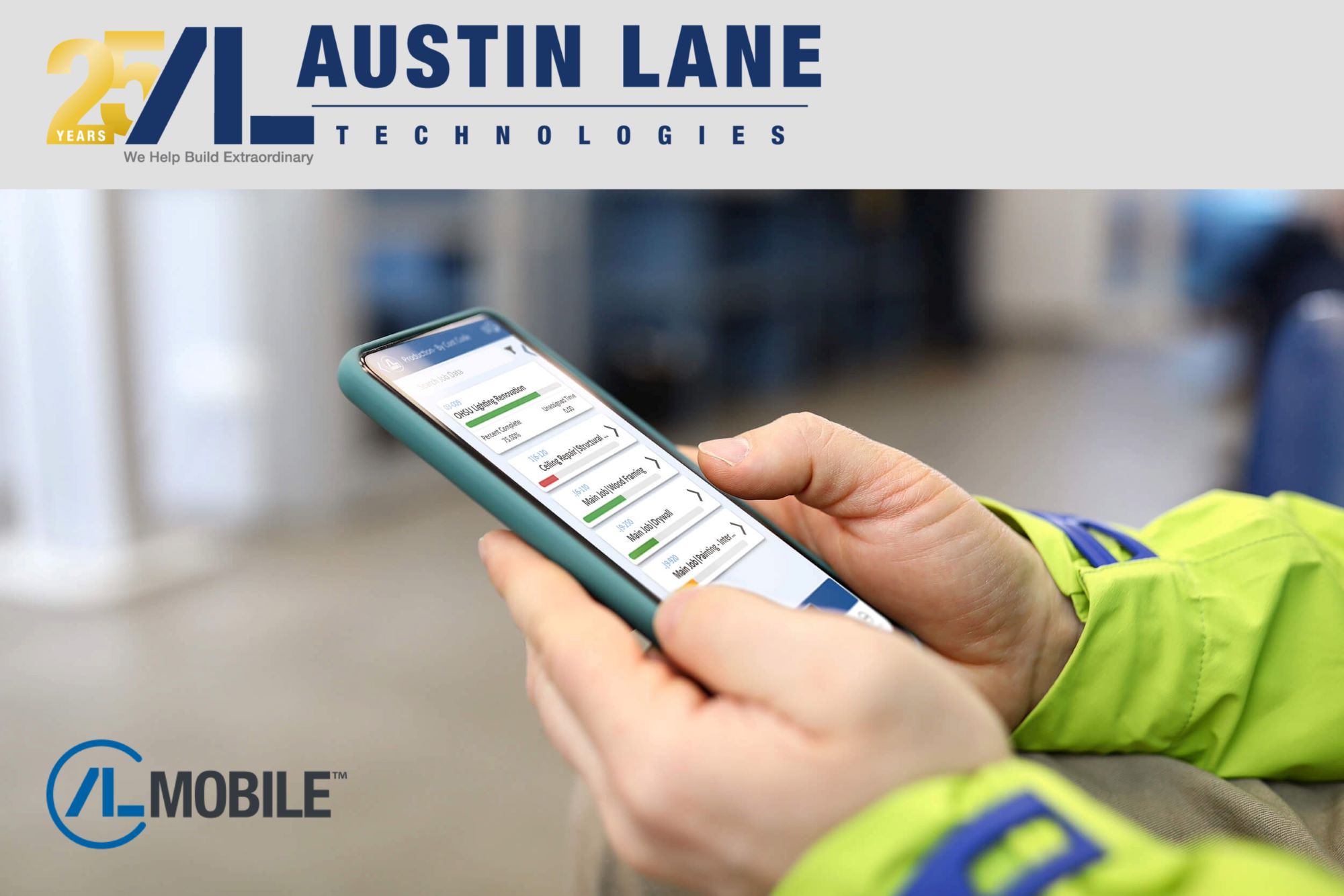By Robert Zimmerman, from the ConTech Exec Newsletter
Productivity in construction has been fumbled around for the last 50 years or more. This week, we focus on cutting-edge trends in time and productivity tracking technology that could help your team “pick up and run” if put to effective use, and the best part is…
You may already have some of these solutions.
Advanced Project Management Software
Integrated Platforms:
Leading software like Procore, PlanGrid, and Autodesk Construction Cloud are setting new standards. These tools integrate scheduling, budgeting, resource allocation, reporting, and streamlining project management. Many companies use one or more of these products to streamline data from one platform to the next.
Mobile Applications:
Real-time updates from the field via mobile apps like ALMobile improve communication and efficiency. Workers can now log hours, report issues, and track progress on-site with ease. ALMobile integrates with many ERPs and other platforms to streamline field data in one easy step.
These are baseline must haves and many companies would do well to invest heavily in these types of products. These tools can be used companywide and provide all historical data and analytics needed for a successful operation. I recommend investing in training personnel that will tailor the processes and then continue to explore and learn. Many outfits only use small portions of these powerful platforms.
IoT and Smart Sensors
Equipment and Material Tracking:
IoT devices enhance resource allocation by tracking equipment usage and material consumption, significantly reducing downtime. Telemetrics has been around for a while, and many equipment manufacturers sell some form of tracking software or maintenance tracking. Integration to ERPs or other platforms is software-specific.
Environment Monitoring:
Intelligent sensors monitor site conditions such as temperature and humidity, ensuring safety and compliance while optimizing working conditions. This type of digital monitoring could be an asset for performance analytics for future predictability.
Obviously, work done in extreme conditions (hot/cold, for instance) can result in significant productivity losses. These types of measurements analyzed and accounted for in scheduling could improve the bottom line by accounting for the productivity loss before bid.
Building Information Modeling (BIM)
4D and 5D BIM:
Incorporating time and cost data into traditional 3D models enables better project planning and management.
Collaboration Tools:
Cloud-based BIM platforms facilitate real-time access and updates to project data, improving coordination and minimizing errors.
A project manager’s ability to spot areas that can derail the scheduling process is a vital part of the job. The days of the paper site plans are ending, and the team on the ground needs real time information to perform above standards and budgets. This type of tech will also expediate RFI’s and final design sign offs.
There will be training and continuing education on tools like these for both the office and the field. These products are continually updating and improving functions, which may or may not affect the workflow, but you will want your teams on the latest versions to remain competitive.
Drones and Aerial Imaging
Progress Monitoring:
High-resolution images and videos captured by drones provide a visual record of progress, helping verify work done and identify potential issues early.
Site Surveys:
Drones offer quick and accurate site surveys, reducing the time and cost of traditional surveying methods.
I just spoke with an engineering friend of mine who says,” we’ve got too many drones!” Now I’m still not sure if he is talking about his drones or his employees’ but in his line of work these flying machines are fantastic. There is no doubt that they can cut down tons of time with the latest technology. And if you haven’t seen LIDAR, you should check it out. It is amazing. Of course, this tech does come with some hefty price tags, but I am certain it will pay for itself in a short time.
Artificial Intelligence and Machine Learning
Predictive Analytics:
AI leverages historical data to predict project timelines, show potential delays, and suggest preventive measures.
Automation:
AI-driven automation enhances efficiency in scheduling, resource allocation, and reporting by reducing human error.
All of this requires accurate historical data. AI leverages data; if the data is bad or unverified, you may as well throw the predictions out the window. I am still on the fence with this tech because its proponents make very bold promises that I feel are misleading. Just like a person entering bad information into an Excel spreadsheet, the results are suspect. Calculating timelines to include errors and delays and the weather is extremely complex. Construction companies will have to hire AI experts to design the algorithms and language to teach the system. This is costly from the start. Secondly, the data will need to be pristine and well-defined within the system. Construction has never been known for a warm embrace of technology and pristine data seems to be the first challenge.
In my opinion, let the hype cool down. Crunch your monthly or weekly numbers with some clean data and you will see the type of improvements you need. As I mentioned before, ERPs and Mobile technology can provide tangible results that will then give a more mature AI process the data it needs to evaluate effectively. At some point, solutions that are more cost effective for complex problems will be developed.
Wearable Technology
Safety and Productivity:
Wearables like smart helmets and vests track workers’ movements and vitals, ensuring safety and monitoring productivity. They can also provide real-time alerts to hazardous conditions.
I really like these ideas for high-risk work; in an environment where seconds and minutes count, this type of monitoring can be the difference between life and death.
Time Tracking:
Wearable devices streamline the process of logging work hours and tracking attendance.
Time tracking with a wearable device is an outdated concept. Buddy-punching or ghost employees can be rampant. This tech has had its day, but for security and accounting standards, it falls short for most operations.
Blockchain Technology
Transparent Contracts:
Blockchain ensures transparent, immutable records of contracts and transactions, reducing disputes and enhancing trust among stakeholders.
Supply Chain Management:
Blockchain tracks materials from source to site, ensuring authenticity and prompt delivery.
This stuff is way over my head at the moment and I can’t speak from any experience. My crypto account is in utter disarray and the entire concept of Blockchain is currently baffling to me. I will however put more research into this concept and report back soon.
Augmented Reality (AR) and Virtual Reality (VR)
Training and Simulation:
AR and VR offer immersive training experiences, helping workers understand complex tasks and safety procedures before stepping onsite.
Project Visualization:
AR and VR allow stakeholders to visualize completed projects and adjust during the planning phase, reducing costly changes during construction.
I am a huge fan of using this type of tech to inform, educate, and explain. There are many who can see the spatial relationships that occur in a complex build, and there are many who cannot. Even the most experienced craftsman or construction professional can make mistakes when the site conditions differ from the drawing plan.
Accurate accounts of the onsite structures and materials are crucial. I’ve run work where the plans told me to run a square 48” Exhaust Vent through 2 layers of existing concrete floor. The space designated was a triangle section 36” x 32” next to a structural column, and the floor was post-tension cabled. AR/VR would have saved the day.
Robotics and Automation
Autonomous Equipment:
Self-driving vehicles and machinery automate repetitive tasks such as excavation, reducing labor costs and improving precision.
Robotic Process Automation (RPA):
RPA saves time and reduces errors in administrative tasks like data entry and compliance reporting.
Humans have long used technology to make work easier or faster. The impact was mostly positive. We call it innovation. Automation has long been the goal of every task known to man. We are reaching a tipping point where our automation and robotics may soon leave humans out of the “labor” equation. I have a real problem with this, but I doubt that my opinion will stop this fast-moving train.
Many people will lose jobs due to automation and robotics. Many will not have the opportunity to reinvent themselves or find new career paths. As we consider a technological future, Will we first take an honest look at the impact of this technology on humans? More to come on this subject.
Industry Challenges and Considerations
Data Security and Privacy:
Protecting sensitive data from cyber threats is crucial as construction sites become more connected.
Adoption Barriers:
High initial costs and resistance to change can hinder the adoption of recent technologies.
Interoperability:
Ensuring different systems and devices can communicate and work together seamlessly is a significant challenge.
Skill Gaps:
The workforce needs to be trained to use advanced technologies effectively.
Conclusion
The construction industry is evolving with the adoption of modern technologies aimed at improving time tracking and productivity. Embracing these trends can lead to significant improvements in efficiency, safety, and overall project outcomes. However, addressing the challenges of data security, adoption barriers, interoperability, and skill gaps raise significant questions about the impact on our labor forces. In future newsletters, I plan to break down each of these sections into more detail. Your input is, as always, welcome.
You can find Robert’s newsletter on LinkedIn






